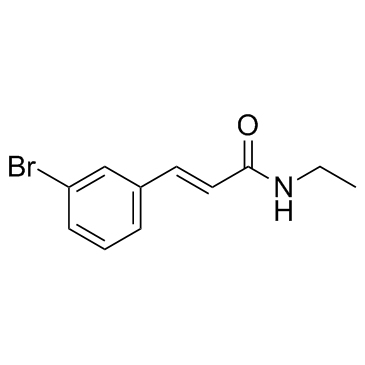Effect of cinromide on inhibitory and excitatory mechanisms.
G H Fromm, C F Terrence, A S Chattha
文献索引:Epilepsia 24(4) , 394-400, (1983)
全文:HTML全文
摘要
The effect of the experimental anticonvulsant cinromide (3-bromo-N-ethylcinnamamide) on various inhibitory and excitatory mechanisms was investigated in the trigeminal nucleus of cats. Intravenous administration of 20-80 mg/kg cinromide depressed excitatory transmission and facilitated segmental inhibition to the same extent as phenytoin, but less than carbamazepine. These doses of cinromide also depressed periventricular inhibition, similar to valproate and ethosuximide. In addition, cinromide had a marked depressant effect on the EEG, suggesting a pronounced sedative effect. The serum levels of cinromide and of its active metabolites (3-bromocinnamamide and 3-bromocinnamic acid) were comparable to those in patients receiving long-term treatment with cinromide. Our results agree with those in other experimental models, which also suggest that cinromide is a broad-spectrum anticonvulsant, and with cinromide's effect in the clinical trials reported so far.
相关化合物
| 结构式 | 名称/CAS号 | 分子式 | 全部文献 |
|---|---|---|---|
 |
反式-3-溴-N-乙基肉桂酰胺
CAS:58473-74-8 |
C11H12BrNO |
|
Prediction of steady-state behavior of metabolite from dosin...
1980-05-01 [J. Pharm. Sci. 69(5) , 610-2, (1980)] |
|
Variability in the determination of fraction metabolized in ...
1984-02-01 [J. Pharm. Sci. 73(2) , 285-7, (1984)] |
|
Simultaneous determination of the anticonvulsants, cinromide...
[J. Chromatogr. A. 163(2) , 187-93, (1979)] |
|
The effect of cinromide on "kindled" seizures in the rat.
1982-03-01 [Neuropharmacology 21(3) , 273-6, (1982)] |
|
Double-blind, placebo-controlled evaluation of cinromide in ...
1989-01-01 [Epilepsia 30(4) , 422-9, (1989)] |